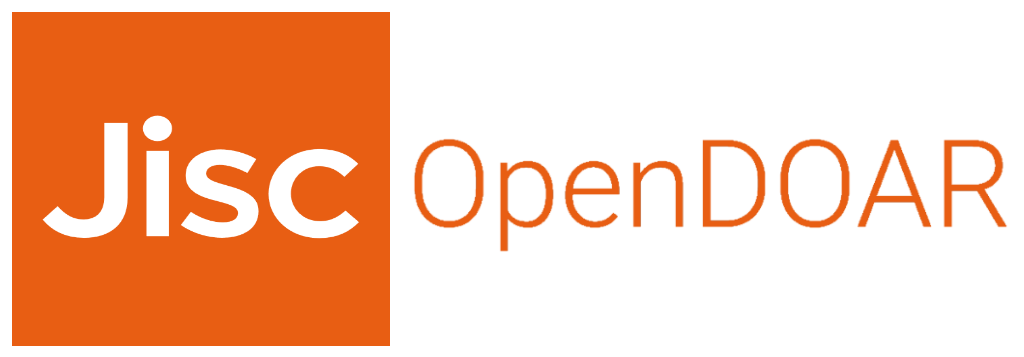| dc.contributor.advisor | Estupiñán Torres., Sandra Mónica | |
| dc.contributor.advisor | Parra GiraldoClaudia Marcela, Claudia Marcela | |
| dc.contributor.advisor | Vargas Casanova, Yerly | |
| dc.contributor.author | Márquez Torres, Mateo | |
| dc.date.accessioned | 2022-10-18T16:26:24Z | |
| dc.date.available | 2022-10-18T16:26:24Z | |
| dc.date.issued | 2022 | |
| dc.identifier.uri | https://repositorio.universidadmayor.edu.co/handle/unicolmayor/5715 | |
| dc.description.abstract | Los péptidos antimicrobianos (PAMs) se han considerado como una estrategia de tratamiento
antimicótica prometedora, ya que cuentan con baja capacidad para inducir resistencia, poseen
varios mecanismos de acción, son de amplio espectro y su combinación con antifúngicos
convencionales puede generar efecto sinérgico, sin embargo, como desventajas se encuentra
altos costos de producción, fácil degradación proteolítica, toxicidad en células eucariotas y
hemólisis sobre los glóbulos rojos. La Lactoferricina Bovina (LfcinB) es un PAM generado tras
la hidrólisis proteica de Lactoferrina Bovina (LFB), por su parte la Buforina II (BFII) es un
PAM aislado del estómago del sapo Bufo bufo gargarizans. Los péptidos mencionados
anteriormente se les ha atribuido un gran potencial antimicrobiano.
Con la finalidad de potenciar la actividad antifúngica, se diseñaron y sintetizaron quimeras
ramificadas que contienen los motivos mínimos de ambos péptidos (LfcinB: RRWQWR y BFII:
RLLR), además se evaluó su actividad hemolítica y el efecto de combinar estas quimeras con
fluconazol. Como resultados se obtuvo que el péptido (RRWQWR)2KXRLLRRLLR presentó
mayor actividad antifúngica (Concentración mínima inhibitoria y fungicida) CMI/CMF 50
µg/mL (15.27 µM)) en comparación con la quimera (RRWQWR)2KXRLLR (CMI/CMF de 100
µg/mL (36.56 µM) contra C. albicans sensible y resistente a fluconazol. La quimera
(RRWQWR)2KXRLLR no exhibió actividad hemolítica mientras que
(RRWQWR)2KXRLLRRLLR presentó porcentaje de hemólisis de 11.56% a la concentración
de la CMI. Con respecto a la combinación de los péptidos quiméricos ramificados junto con
fluconazol, se obtuvo sinergia con ambos péptidos cuando se evaluaron frente a C. albicans
sensible a este antifúngico | spa |
| dc.description.tableofcontents | Tabla de contenido
Pág.
1. INTRODUCCIÓN.2
2. ANTECEDENTES 5
3. MARCO TEÓRICO.10
3.1 Generalidades Candida albicans..10
3.1.1 Patogenia.10
3.1.2 Manifestaciones clínicas ..12
3.1.3 Antifúngicos para Candidiasis invasiva..12
3.1.4 Mecanismos de resistencia a antifúngicos.12
3.2 Péptidos antimicrobianos.13
3.3 Lactoferrina Bovina .14
3.3 Lactoferricina Bovina.14
3.5 Buforina I.16
3.6 Buforina II16
4. OBJETIVOS ..18
4.1 Objetivo general..18
4.2 Objetivos específicos.18
5. DISEÑO METODOLÓGICO .19
5.1. Materiales19
5.1.1 Candida albicans SC5314 (Robin) Berkhout (ATCC® MYA- 2876™)19
5.1.2 Candida albicans 256 HUSI-PUJ 20
3.2 Hipótesis21
5.2. Estrategia de trabajo 21
5.3.1 Síntesis y caracterización de los péptidos22
5.3.2 Determinación de la Concentración Mínima Inhibitoria ..22
5.3.3 Concentración Mínima Fungicida23
5.3.4 Curvas de letalidad .24
5.3.5 Determinación de la actividad hemolítica .24
5.3.6 Ensayo de titulación en tablero de ajedrez25
6. RESULTADOS Y DISCUSIÓN ..27
6.1 Etapa 1: Microdilución en caldo y CMF27
6.2 Etapa 2: Cinética de actividad de péptidos quiméricos ramificados ..30
6.3 Etapa 3: Efecto hemolítico de los péptidos quiméricos ramificados34
6.4 Efecto combinado de los péptidos quiméricos ramificados mezclados con fluconazol..37
7. CONCLUSIONES .40
6. Referencias Bibliográficas41
Anexos50
Anexo 1. CMI y CMF50
Anexo 2. Actividad hemolítica. .52
Anexo 3. Titulación en tablero de ajedrez 53 | spa |
| dc.format.extent | 66p. | spa |
| dc.format.mimetype | application/pdf | spa |
| dc.language.iso | spa | spa |
| dc.rights | Derechos Reservados - Universidad Colegio Mayor de Cundinamarca, 2022 | eng |
| dc.rights.uri | https://creativecommons.org/licenses/by-nc-sa/4.0/ | spa |
| dc.title | Evaluación de la actividad anti-Candida de péptidos quiméricos ramificados derivados de Lactoferricina Bovina y Buforina II. | spa |
| dc.type | Trabajo de grado - Pregrado | spa |
| dc.description.degreelevel | Pregrado | spa |
| dc.description.degreename | Bacteriólogo(a) y Laboratorista Clínico | spa |
| dc.publisher.faculty | Facultad de Ciencias de la Salud | spa |
| dc.publisher.place | Bogotá | spa |
| dc.publisher.program | Bacteriología y Laboratorio Clínico | spa |
| dc.relation.references | Gudat W, Heizmann W, Hockertz S, Nolting S. Candida Albicans. Z Allgemeinmed.
1998;74(17–18):782–5 | spa |
| dc.relation.references | Basmaciyan L, Bon F, Paradis T, Lapaquette P, Dalle F. “Candida Albicans
Interactions With The Host: Crossing The Intestinal Epithelial Barrier.” Tissue Barriers
[Internet]. 2019;7(2):1–31. Available from:
https://doi.org/10.1080/21688370.2019.1612661 | spa |
| dc.relation.references | Oberoi JK. Invasive candidiasis [Internet]. Campion EW, editor. Vol. 23, Journal
International Medical Sciences Academy. 2010 [cited 2021 Feb 19]. p. 25–8. Available
from: http://www.nejm.org/doi/10.1056/NEJMra1315399 | spa |
| dc.relation.references | Bartlett JG. Nosocomial bloodstream infections in US hospitals: Analysis of 24,179
cases from a prospective nationwide surveillance study. Infect Dis Clin Pract.
2004;12(6):376. | spa |
| dc.relation.references | Bedout C de, Gómez BL. Candida y candidiasis invasora: un reto continuo para su
diagnóstico temprano. Infectio. 2010;14(94):159–71. | spa |
| dc.relation.references | Valencia A, Páez A, Sampedro M, Ávila C, Cardona J, Mesa C. Candidemia en
Colombia. Biomédica. 2020;40(1):1–33. | spa |
| dc.relation.references | Maestre Vera JR, Alou Cervera L. Ventajas y desventajas de los antifúngicos de uso
tópico [Internet]. Vol. 14, Revista Espanola de Quimioterapia. 2001 [cited 2021 Feb
19]. p. 232–7. Available from: https://seq.es/seq/html/revista_seq/0301/rev1.html | spa |
| dc.relation.references | Spampinato C, Leonardi D. Candida infections, causes, targets, and resistance
mechanisms: Traditional and alternative antifungal agents. Biomed Res Int. 2013;2013. | spa |
| dc.relation.references | Parente-Rocha JA, Bailão AM, Amaral AC, Taborda CP, Paccez JD, Borges CL, et al.
Antifungal Resistance, Metabolic Routes as Drug Targets, and New Antifungal Agents:
An Overview about Endemic Dimorphic Fungi. Mediators Inflamm. 2017;2017 | spa |
| dc.relation.references | K. Mazu T, A. Bricker B, Flores-Rozas H, Y. Ablordeppey S. The Mechanistic Targets
of Antifungal Agents: An Overview. Mini-Reviews Med Chem. 2016;16(7):555–78. | spa |
| dc.relation.references | Organización Mundial de la Salud. Un informe de la OMS confirma que el mundo se
está quedando sin antibióticos [Internet]. Who. 2017 [cited 2021 Feb 19]. p. 1–3.
Available from: https://www.who.int/es/news/item/20-09-2017-the-world-is-runningout-of-antibiotics-who-report-confirms | spa |
| dc.relation.references | Bondaryk M, Staniszewska M, Zielińska P, Urbańczyk-Lipkowska Z. Natural
antimicrobial peptides as inspiration for design of a new generation antifungal
compounds. Vol. 3, Journal of Fungi. 2017. | spa |
| dc.relation.references | Lachowicz JI, Szczepski K, Scano A, Casu C, Fais S, Orrù G, et al. The Best
Peptidomimetic Strategies to Undercover Antibacterial Peptides. Int J Mol Sci 2020,
Vol 21, Page 7349 [Internet]. 2020 Oct 5 [cited 2021 Sep 15];21(19):7349. Available
from: https://www.mdpi.com/1422-0067/21/19/7349/htm | spa |
| dc.relation.references | Moghaddam MM, Abolhassani F, Babavalian H, Mirnejad R, Barjini KA, Amani J.
Comparison of in vitro antibacterial activities of two cationic peptides CM15 and
CM11 against five pathogenic bacteria: Pseudomonas aeruginosa, Staphylococcus
aureus, Vibrio cholerae, Acinetobacter baumannii, and Escherichia coli. Probiotics
Antimicrob Proteins [Internet]. 2012 Jun 4 [cited 2021 Dec 2];4(2):133–9. Available
from: https://ezproxy.unicolmayor.edu.co:2425/article/10.1007/s12602-012-9098-7 | spa |
| dc.relation.references | Vargas-Casanova Y, Carlos Villamil Poveda J, Jenny Rivera-Monroy Z, Ceballos
Garzón A, Fierro-Medina R, Le Pape P, et al. Palindromic Peptide LfcinB (21-25)Pal
Exhibited Antifungal Activity against Multidrug-Resistant Candida. ChemistrySelect.
2020;5(24):7236–42. | spa |
| dc.relation.references | EL LARGO CAMINO HACIA EL ANTIFÚNGICO IDEAL [Internet]. [cited 2021
Feb 19]. Available from: https://www.siicsalud.com/des/expertoimpreso.php/99235 | spa |
| dc.relation.references | Wang G. Human antimicrobial peptides and proteins. Pharmaceuticals. 2014;7(5):545–
94. | spa |
| dc.relation.references | Brogden NK, Brogden KA, Brogden KA. Will new generations of modified
antimicrobial peptides improve their potential as pharmaceuticals? Int J Antimicrob
Agents [Internet]. 2011;38(3):217–25. Available from: http://clinicaltrials.gov/ | spa |
| dc.relation.references | Wakabayashi H, Matsumoto H, Hashimoto K, Teraguchi S, Takase M, Hayasawa H.
N-acylated and D enantiomer derivatives of a nonamer core peptide of lactoferricin B
showing improved antimicrobial activityfile:///C:/Users/mateo/Downloads/25.pdf.
Antimicrob Agents Chemother. 1999;43(5):1267–9 | spa |
| dc.relation.references | Wakabayashi H, Matsumoto H, Hashimoto K, Teraguchi S, Takase M, Hayasawa H.
N-acylated and D enantiomer derivatives of a nonamer core peptide of lactoferricin B
showing improved antimicrobial activityfile:///C:/Users/mateo/Downloads/25.pdf.
Antimicrob Agents Chemother. 1999;43(5):1267–9 | spa |
| dc.relation.references | Rodríguez-Franco DA, Vázquez-Moreno L, Ramos-Clamont Montfort G. Actividad
antimicrobiana de la lactoferrina: Mecanismos y aplicaciones clínicas potenciales. Rev
Latinoam Microbiol. 2005;47(3–4):102–11 | spa |
| dc.relation.references | Kuipers ME, De Vries HG, Eikelboom MC, Meijer DKF, Swart PJ. Synergistic
fungistatic effects of lactoferrin in combination with antifungal drugs against clinical
Candida isolates. Antimicrob Agents Chemother. 1999;43(11):2635–41. | spa |
| dc.relation.references | Fernandes KE, Weeks K, Carter DA. Lactoferrin Is Broadly Active against Yeasts and
Highly Synergistic with Amphotericin B. Antimicrob Agents Chemother [Internet].
2020 May 1 [cited 2021 Sep 15];64(5). Available from: /pmc/articles/PMC7179636/ | spa |
| dc.relation.references | Wakabayashi H, Abe S, Teraguchi S, Hayasawa H, Yamaguchi H. Inhibition of hyphal
growth of azole-resistant strains of Candida albicans by triazole antifungal agents in the
presence of lactoferrin- related compounds. Antimicrob Agents Chemother.
1998;42(7):1587–91. | spa |
| dc.relation.references | Chang C-K, Kao M-C, Lan C-Y. Antimicrobial Activity of the Peptide LfcinB15
against Candida albicans. J Fungi 2021, Vol 7, Page 519 [Internet]. 2021 Jun 29 [cited
2021 Sep 15];7(7):519. Available from: https://www.mdpi.com/2309-
608X/7/7/519/htm | spa |
| dc.relation.references | Feng X, Liu C, Guo J, Song X, Li J, Xu W, et al. Recombinant expression, purification,
and antimicrobial activity of a novel hybrid antimicrobial peptide LFT33. Appl
Microbiol Biotechnol [Internet]. 2012 Sep 22 [cited 2021 Dec 2];95(5):1191–8.
Available from: https://ezproxy.unicolmayor.edu.co:2425/article/10.1007/s00253-011-
3816-z | spa |
| dc.relation.references | Xi D, Teng D, Wang X, Mao R, Yang Y, Xiang W, et al. Design, expression and
characterization of the hybrid antimicrobial peptide LHP7, connected by a flexible
linker, against Staphylococcus and Streptococcus. Process Biochem. 2013 Mar
1;48(3):453–61 | spa |
| dc.relation.references | Jang SA, Kim H, Lee JY, Shin JR, Kim DJ, Cho JH, et al. Mechanism of action and
specificity of antimicrobial peptides designed based on buforin IIb. Peptides [Internet].
2012 [cited 2021 Dec 2];34(2):283–9. Available from:
https://ezproxy.unicolmayor.edu.co:2163/science/article/pii/S0196978112000368 | spa |
| dc.relation.references | Roshanak S, Shahidi F, Yazdi FT, Javadmanesh A, Movaffagh J. Evaluation of
Antimicrobial Activity of Buforin I and Nisin and the Synergistic Effect of Their
Combination as a Novel Antimicrobial Preservative. J Food Prot [Internet]. 2020 Nov 1
[cited 2021 Dec 2];83(11):2018–25. Available from: https://doi.org/10.4315/JFP-20-
127 | spa |
| dc.relation.references | Cho JH, Sung BH, Kim SC. Buforins: Histone H2A-derived antimicrobial peptides
from toad stomach. Biochim Biophys Acta - Biomembr [Internet]. 2009;1788(8):1564–
9. Available from: http://dx.doi.org/10.1016/j.bbamem.2008.10.025 | spa |
| dc.relation.references | Jang WS, Kim HK, Lee KY, Kim SA, Han YS, Lee IH. Antifungal activity of synthetic
peptide derived from halocidin, antimicrobial peptide from the tunicate, Halocynthia
aurantium. FEBS Lett. 2006;580(5):1490–6 | spa |
| dc.relation.references | González L, Muñoz C, Celis A. Evaluación de la actividad inhibidora de los péptidos
antimicrobianos Buforina II y Frenatin 2.3S ante Malassezia spp [Internet]. instname:Universidad de los Andes. Uniandes; 2019 [cited 2021 Feb 19]. Available
from: https://repositorio.uniandes.edu.co/handle/1992/45818 | spa |
| dc.relation.references | Park CB, Yi KS, Matsuzaki K, Kim MS, Kim SC. Structure-activity analysis of buforin
II, a histone H2A-derived antimicrobial peptide: The proline hinge is responsible for
the cell-penetrating ability of buforin II. Proc Natl Acad Sci U S A [Internet]. 2000 Jul
18 [cited 2021 Dec 2];97(15):8245–50. Available from: /pmc/articles/PMC26932/ | spa |
| dc.relation.references | Huertas Méndez NDJ, Vargas Casanova Y, Gómez Chimbi AK, Hernández E, Leal
Castro AL, Melo Diaz JM, et al. Synthetic Peptides Derived from Bovine Lactoferricin
Exhibit Antimicrobial Activity against E. coli ATCC 11775, S. maltophilia ATCC
13636 and S. enteritidis ATCC 13076. Molecules [Internet]. 2017 Mar 12 [cited 2021
Dec 2];22(3):452. Available from: https://www.mdpi.com/1420-3049/22/3/452/htm | spa |
| dc.relation.references | Pineda-Castañeda HM, Huertas-Ortiz KA, Leal-Castro AL, Vargas-Casanova Y, ParraGiraldo CM, García-Castañeda JE, et al. Designing Chimeric Peptides: A Powerful
Tool for Enhancing Antibacterial Activity. Chem Biodivers [Internet]. 2021 Feb 1
[cited 2021 Dec 2];18(2):e2000885. Available from:
https://onlinelibrary.wiley.com/doi/full/10.1002/cbdv.202000885 | spa |
| dc.relation.references | Aguirre-guataqui K, Pineda-castañeda H, Ceballos-garzon A, Vargas-casanova Y,
García-castañeda J, Parra-giraldo CM. Chimeric peptides derived from Bovine
Lactoferricin and Buforin II : antifungal activity against reference strains and clin- ical
isolates of Candida spp. 2021;1–16. | spa |
| dc.relation.references | Liu SP, Zhou L, Lakshminarayanan R, Beuerman RW. Multivalent antimicrobial
peptides as therapeutics: Design principles and structural diversities. Int J Pept Res
Ther. 2010;16(3):199–213 | spa |
| dc.relation.references | Romo JA, Pierce CG, Esqueda M, Hung C-Y, Saville SP, Lopez-Ribot JL. In Vitro
Characterization of a Biaryl Amide Anti-virulence Compound Targeting Candida
albicans Filamentation and Biofilm Formation. Front Cell Infect Microbiol [Internet].
2018 Jul 10 [cited 2021 Sep 15];8(JUL). Available from: /pmc/articles/PMC6048184/ | spa |
| dc.relation.references | Chow EWL, Pang LM, Wang Y. From Jekyll to Hyde: The Yeast–Hyphal Transition
of Candida albicans. Pathog 2021, Vol 10, Page 859 [Internet]. 2021 Jul 7 [cited 2021
Sep 15];10(7):859. Available from: https://www.mdpi.com/2076-0817/10/7/859/htm | spa |
| dc.relation.references | C d’Enfert. Hidden killers: persistence of opportunistic fungal pathogens in the human
host. Curr Opin Microbiol [Internet]. 2009 Aug [cited 2021 Sep 15];12(4):358–64.
Available from: https://pubmed.ncbi.nlm.nih.gov/19541532/ | spa |
| dc.relation.references | S H, S M, B H. Interaction of Candida albicans with host cells: virulence factors, host defense, escape strategies, and the microbiota. J Microbiol [Internet]. 2016 Mar 1 [cited
2021 Sep 15];54(3):149–69. Available from:
https://pubmed.ncbi.nlm.nih.gov/26920876/ | spa |
| dc.relation.references | Garcia-Rubio R, de Oliveira HC, Rivera J, Trevijano-Contador N. The Fungal Cell
Wall: Candida, Cryptococcus, and Aspergillus Species. Front Microbiol. 2020 Jan
9;0:2993 | spa |
| dc.relation.references | C d’Enfert, AK K, LR A, S C, N C, M D, et al. The impact of the Fungus-HostMicrobiota interplay upon Candida albicans infections: current knowledge and new
perspectives. FEMS Microbiol Rev [Internet]. 2021 [cited 2021 Sep 15];45(3).
Available from: https://pubmed.ncbi.nlm.nih.gov/33232448/ | spa |
| dc.relation.references | LN M, IM van der H, SF C, AP S, RA S, S G, et al. Candida colonisation as a source
for candidaemia. J Hosp Infect [Internet]. 2009 [cited 2021 Sep 15];72(1):9–16.
Available from: https://pubmed.ncbi.nlm.nih.gov/19303662/ | spa |
| dc.relation.references | J T, M J, T M, E P, S B, I K, et al. Candida albicans- The Virulence Factors and
Clinical Manifestations of Infection. J fungi (Basel, Switzerland) [Internet]. 2021 Feb 1
[cited 2021 Sep 15];7(2):1–19. Available from:
https://pubmed.ncbi.nlm.nih.gov/33499276/ | spa |
| dc.relation.references | Pereira R, Fontenelle RO dos S, Brito EHS de, Morais SM de. Biofilm of Candida
albicans: formation, regulation and resistance. J Appl Microbiol [Internet]. 2021 Jul 1
[cited 2021 Sep 15];131(1):11–22. Available from:
https://onlinelibrary.wiley.com/doi/full/10.1111/jam.14949 | spa |
| dc.relation.references | Factores de virulencia para la infección de tejidos queratinizados por Candida albicans
y hongos dermatofitos [Internet]. [cited 2021 Sep 15]. Available from:
http://www.scielo.org.co/scielo.php?script=sci_arttext&pid=S0120-
87052012000100005 | spa |
| dc.relation.references | Lohse MB, Gulati M, Johnson AD, Nobile CJ. Development and regulation of singleand multi-species Candida albicans biofilms. Nat Rev Microbiol 2017 161 [Internet].
2017 Oct 3 [cited 2021 Sep 15];16(1):19–31. Available from:
https://www.nature.com/articles/nrmicro.2017.107 | spa |
| dc.relation.references | Martins N, Ferreira ICFR, Barros L, Silva S, Henriques M. Candidiasis: Predisposing
Factors, Prevention, Diagnosis and Alternative Treatment. Mycopathol 2014 1775
[Internet]. 2014 May 1 [cited 2021 Sep 15];177(5):223–40. Available from:
https://link.springer.com/article/10.1007/s11046-014-9749-1 | spa |
| dc.relation.references | Wall G, Montelongo-Jauregui D, Vidal Bonifacio B, Lopez-Ribot JL, Uppuluri P. Candida albicans biofilm growth and dispersal: contributions to pathogenesis. Curr
Opin Microbiol. 2019 Dec 1;52:1–6 | spa |
| dc.relation.references | Rivera-Toledo E, Uriel Jiménez-Delgadillo A, Manzano-Gayosso P, para
correspondencia A, Rivera Toledo E. Antifúngicos poliénicos. Mecanismo de acción y
aplicaciones. 2020 [cited 2021 Sep 15];63. Available from:
http://doi.org/10.22201/fm.24484865e.2020.63.2.02 | spa |
| dc.relation.references | Cortés L JA, Russi N JA. Equinocandinas. Rev Chil infectología [Internet]. 2011 Dec
[cited 2021 Sep 15];28(6):529–36. Available from:
http://www.scielo.cl/scielo.php?script=sci_arttext&pid=S0716-
10182011000700004&lng=es&nrm=iso&tlng=es | spa |
| dc.relation.references | Cervera C. Candidemia y candidiasis invasora en el adulto. Formas clínicas y
tratamiento. Enferm Infecc Microbiol Clin. 2012 Oct 1;30(8):483–91. | spa |
| dc.relation.references | Carolus H, Pierson S, Lagrou K, Dijck P Van. Amphotericin B and Other Polyenes—
Discovery, Clinical Use, Mode of Action and Drug Resistance. J Fungi [Internet]. 2020
Dec 1 [cited 2021 Sep 15];6(4):1–20. Available from: /pmc/articles/PMC7724567/ | spa |
| dc.relation.references | Fattouh N, Hdayed D, Geukgeuzian G, Tokajian S, Khalaf RA. Molecular mechanism
of fluconazole resistance and pathogenicity attributes of Lebanese Candida albicans
hospital isolates. Fungal Genet Biol. 2021 Aug 1;153:103575. | spa |
| dc.relation.references | Garcia-Effron G, Park S, Perlin DS. Correlating Echinocandin MIC and Kinetic
Inhibition of fks1 Mutant Glucan Synthases for Candida albicans: Implications for
Interpretive Breakpoints. Antimicrob Agents Chemother [Internet]. 2009 Jan [cited
2021 Sep 15];53(1):112. Available from: /pmc/articles/PMC2612148/ | spa |
| dc.relation.references | Shwaiki LN, Lynch KM, Arendt EK. Future of antimicrobial peptides derived from
plants in food application – A focus on synthetic peptides. Trends Food Sci Technol.
2021 Jun 1;112:312–24 | spa |
| dc.relation.references | Alberto Téllez G, Castaño JC. Péptidos antimicrobianos Antimicrobial peptides. 2010
[cited 2021 Sep 15];14(1):55–67. Available from: www.ncbi.nlm.nih.gov/pubmed | spa |
| dc.relation.references | Mwangi J, Hao X, Lai R, Zhang ZY. Antimicrobial peptides: new hope in the war
against multidrug resistance. Zool Res. 2019;40(6):488–505. | spa |
| dc.relation.references | Lima PG, Oliveira JTA, Amaral JL, Freitas CDT, Souza PFN. Synthetic antimicrobial
peptides: Characteristics, design, and potential as alternative molecules to overcome
microbial resistance. Life Sci. 2021 Aug 1;278:119647 | spa |
| dc.relation.references | Agüero E, Quijada P, García-Novo MD. Adición de lactoferrina a las fórmulas de
inicio. An Pediatría Contin [Internet]. 2008 Apr 1 [cited 2022 Jan 30];6(2):103–7. Available from: https://www.elsevier.es/es-revista-anales-pediatria-continuada-51-
articulo-adicion-lactoferrina-formulas-inicio-S1696281808748613 | spa |
| dc.relation.references | Mexicana AF, México AC, Serrano D, Elisa M. 3, julio-septiembre. Rev Mex Ciencias
Farm [Internet]. 2007 [cited 2022 Jan 30];38:30–8. Available from:
http://www.redalyc.org/articulo.oa?id=57938306 | spa |
| dc.relation.references | Zhang T, Yang W, Liu N. Effect of loop structure of bovine lactoferricin on apoptosis
in Jurkat cells. BioMetals 2010 233 [Internet]. 2010 Mar 17 [cited 2021 Sep
16];23(3):555–61. Available from: https://link.springer.com/article/10.1007/s10534-
010-9324-2 | spa |
| dc.relation.references | Wang L, Wang YL, Lv ZL, Zhang E peng, Guo A zhen. Design of bovine lactoferricinderived peptide and its expression and activity in Pichia pastoris. Biochem Biophys Res
Commun. 2021 Jan 1;534:822–9. | spa |
| dc.relation.references | Farnaud S, Evans RW. Lactoferrin—a multifunctional protein with antimicrobial
properties. Mol Immunol. 2003 Nov 1;40(7):395–405. | spa |
| dc.relation.references | Gifford JL, Hunter HN, Vogel HJ. Lactoferricin: A lactoferrin-derived peptide with
antimicrobial, antiviral, antitumor and immunological properties [Internet]. Vol. 62,
Cellular and Molecular Life Sciences. Cell Mol Life Sci; 2005 [cited 2021 Sep 16]. p.
2588–98. Available from: https://pubmed.ncbi.nlm.nih.gov/16261252/ | spa |
| dc.relation.references | Huertas N de J, Monroy ZJR, Medina RF, Castañeda JEG. Antimicrobial Activity of
Truncated and Polyvalent Peptides Derived from the FKCRRWQWRMKKGLA
Sequence against Escherichia coli ATCC 25922 and Staphylococcus aureus ATCC
25923. Mol A J Synth Chem Nat Prod Chem [Internet]. 2017 Jun 14 [cited 2021 Sep
16];22(6). Available from: /pmc/articles/PMC6152618/ | spa |
| dc.relation.references | Roshanak S, Shahidi F, Tabatabaei Yazdi F, Javadmanesh A, Movaffagh J. Buforin I
an alternative to conventional antibiotics: Evaluation of the antimicrobial properties,
stability, and safety. Microb Pathog [Internet]. 2021 Dec 1 [cited 2021 Dec
2];161:105301. Available from:
https://linkinghub.elsevier.com/retrieve/pii/S0882401021005751 | spa |
| dc.relation.references | Park CB, Kim MS, Kim SC. A novel antimicrobial peptide from Bufo bufo
gargarizans. Biochem Biophys Res Commun. 1996 Jan 5;218(1):408–13. | spa |
| dc.relation.references | Park CB, Kim HS, Kim SC. Mechanism of action of the antimicrobial peptide buforin
II: Buforin II kills microorganisms by penetrating the cell membrane and inhibiting
cellular functions. Biochem Biophys Res Commun. 1998 Mar 6;244(1):253–7. | spa |
| dc.relation.references | Pavia KE, Spinella SA, Elmore DE. Novel Histone-Derived Antimicrobial Peptides Use Different Antimicrobial Mechanisms. Biochim Biophys Acta [Internet]. 2012 Mar
[cited 2021 Dec 2];1818(3):869. Available from: /pmc/articles/PMC3273674 | spa |
| dc.relation.references | Castañeda HM. Péptidos Quiméricos Derivados De La Lactoferricina Bovina Y La
Buforina: Síntesis, Caracterización Y Evaluación De Su Actividad Antibacteriana.
Tesis Maest [Internet]. 2019 [cited 2021 Dec 2];34. Available from:
https://repositorio.unal.edu.co/handle/unal/76691 | spa |
| dc.relation.references | Clinical and Laboratory Standards Institute. Methods for Dilution Antimicrobial
Susceptibility Tests for Bacteria That Grow Aerobically; Approved Standard—Ninth
Edition. [Internet]. CLSI document M07-A9(2012.). [cited 2021 Sep 16]. Available
from: https://clsi.org/media/1928/m07ed11_sample.pdf | spa |
| dc.relation.references | M26-A Methods for Determining Bactericidal Activity of Antimicrobial Agents;
Approved Guideline This document provides procedures for determining the lethal
activity of antimicrobial agents. 1999 [cited 2021 Sep 16]; Available from:
www.clsi.org. | spa |
| dc.relation.references | Solarte VA, Rosas JE, Rivera ZJ, Arango-Rodríguez ML, García JE, Vernot JP. A
tetrameric peptide derived from bovine lactoferricin exhibits specific cytotoxic effects
against oral squamous-cell carcinoma cell lines. Biomed Res Int [Internet]. 2015;2015.
Available from: http://dx.doi.org/10.1155/2015/630179 | spa |
| dc.relation.references | Ježíková Z, Pagáč T, Víglaš J, Pfeiferová B, Šoltys K, Bujdáková H, et al. Synergy
Over Monotherapy. Curr Microbiol [Internet]. 2019 Apr 2 [cited 2022 Feb
16];76(6):673–7. Available from: https://link.springer.com/article/10.1007/s00284-019-
01678-9 | spa |
| dc.relation.references | Wei G-X, Campagna AN, Bobek LA. Factors affecting antimicrobial activity of MUC7
12-mer, a human salivary mucin-derived peptide. Ann Clin Microbiol Antimicrob 2007
61 [Internet]. 2007 Nov 11 [cited 2021 Sep 16];6(1):1–10. Available from: https://annclinmicrob.biomedcentral.com/articles/10.1186/1476-0711-6-14 | spa |
| dc.relation.references | Committee for Antimicrobial Susceptibility Testing of the European Society of Clinical
Microbiology E, Diseases I. Terminology relating to methods for the determination of
susceptibility of bacteria to antimicrobial agents. Clin Microbiol Infect [Internet]. 2000
Sep 1 [cited 2022 Jan 21];6(9):503–8. Available from: | spa |
| dc.relation.references | Lakshminarayanan R, Liu S, Li J, Nandhakumar M, Aung TT, Goh E, et al. Synthetic
Multivalent Antifungal Peptides Effective against Fungi. PLoS One [Internet]. 2014
Feb 3 [cited 2022 Feb 24];9(2):87730. Available from: /pmc/articles/PMC3912015/ | spa |
| dc.relation.references | Yang C, Guo S, Wu X, Yang P, Han L, Dai X, et al. Multiscale study on the enhancing
effect and mechanism of borneolum on transdermal permeation of drugs with different
log P values and molecular sizes. Int J Pharm. 2020 Apr 30;580:119225. | spa |
| dc.relation.references | Klubthawee N, Adisakwattana P, Hanpithakpong W, Somsri S, Aunpad R. A novel,
rationally designed, hybrid antimicrobial peptide, inspired by cathelicidin and aurein,
exhibits membrane-active mechanisms against Pseudomonas aeruginosa. Sci Rep
[Internet]. 2020;10(1). Available from: www.nature.com/scientificreports | spa |
| dc.relation.references | Arfa A Ben, Combes S, Preziosi-Belloy L, Gontard N, Chalier P. Antimicrobial
activity of carvacrol related to its chemical structure. | spa |
| dc.relation.references | Wade HM, Darling LEO, Elmore DE. Hybrids Made from Antimicrobial Peptides with
Different Mechanisms of Action Show Enhanced Membrane Permeabilization.
Biochim Biophys acta Biomembr [Internet]. 2019 Oct 1 [cited 2022 Jan
21];1861(10):182980. Available from: /pmc/articles/PMC6721965/ | spa |
| dc.relation.references | Wade HM, Darling LEO, Elmore DE. Hybrids Made from Antimicrobial Peptides with
Different Mechanisms of Action Show Enhanced Membrane Permeabilization.
Biochim Biophys acta Biomembr [Internet]. 2019 Oct 1 [cited 2022 Jan
21];1861(10):182980. Available from: /pmc/articles/PMC6721965/ | spa |
| dc.relation.references | Pineda HM. PÉPTIDOS QUIMÉRICOS DERIVADOS DE LA LACTOFERRICINA
BOVINA Y LA BUFORINA: SÍNTESIS, CARACTERIZACIÓN Y EVALUACIÓN
DE SU ACTIVIDAD ANTIBACTERIANA. 2019; | spa |
| dc.relation.references | Vega Chaparro SC, Valencia Salguero JT, Martínez Baquero DA, Rosas Pérez JE.
Effect of Polyvalence on the Antibacterial Activity of a Synthetic Peptide Derived from
Bovine Lactoferricin against Healthcare-Associated Infectious Pathogens. Biomed Res
Int [Internet]. 2018 [cited 2022 Jan 21];2018. Available from:
/pmc/articles/PMC6015718/ | spa |
| dc.relation.references | Lai YW, Campbell LT, Wilkins MR, Pang CNI, Chen S, Carter DA. Synergy and
antagonism between iron chelators and antifungal drugs in Cryptococcus. Int J
Antimicrob Agents. 2016 Oct 1;48(4):388–94. | spa |
| dc.rights.accessrights | info:eu-repo/semantics/closedAccess | spa |
| dc.rights.creativecommons | Atribución-NoComercial-CompartirIgual 4.0 Internacional (CC BY-NC-SA 4.0) | spa |
| dc.subject.proposal | Candida albicans | eng |
| dc.subject.proposal | Lactoferricina bovina | spa |
| dc.subject.proposal | BuforinaII | spa |
| dc.subject.proposal | Péptidos antimicrobianos | spa |
| dc.subject.proposal | Quimeras | eng |
| dc.type.coar | http://purl.org/coar/resource_type/c_7a1f | spa |
| dc.type.coarversion | http://purl.org/coar/version/c_970fb48d4fbd8a85 | spa |
| dc.type.content | Text | spa |
| dc.type.driver | info:eu-repo/semantics/bachelorThesis | spa |
| dc.type.redcol | https://purl.org/redcol/resource_type/TP | spa |
| dc.type.version | info:eu-repo/semantics/publishedVersion | spa |
| dc.rights.coar | http://purl.org/coar/access_right/c_14cb | spa |




















